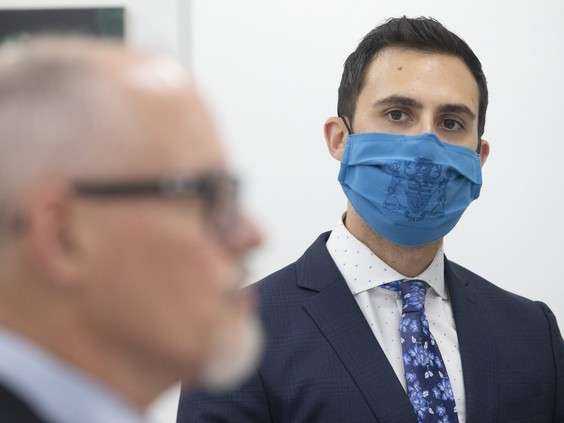BY PAUL JUNOR
There are still many uncertainties in the public education sector as the announcement that students will return to the classrooms triggered widespread concerns from many groups.
On Wednesday, January 12th, 2022, Ontario Education Minister, Stephen Lecce and Ontario’s Chief Medical Officer, Dr Kieran Moore reported that students will return to schools on Monday, January 17th, in the midst of rising cases of the Omicron variant in the Ontario population.
In preparation for the return of students, a news release from the Ontario government revealed that additional measures such as rapid antigen testing, high-quality masks to staff and students and the launch of school-based vaccine clinics will be offered.
Minister Lecce states, “We are meeting the unique challenges presented by the Omicron variant head-on as we do everything we can to support in-person learning. Our government is taking nothing for granted, which is why we are launching school-based vaccination clinics, distributing millions of rapid antigen tests and have deployed non-fit-tested N95 masks to staff and three-ply masks to students.”
New steps include:
- High-quality masks
- Improved ventilation
- Stricter screening
- Historic funding
- Access to additional educators
- Enhanced co-horting and cleaning
Dr Kieran is supportive of the return of students to the classrooms. He states, “In-person learning is critical to the mental health and well-being of our children and youth. In light of the unique challenges posed by the Omicron variant, my team and I will continue to work with the education sector to review all of our guidelines and all environmental, health, cleaning, and ventilation standards to ensure our schools remain as safe as possible for all.”
There has been media attention given to the fact that random testing of asymptomatic individuals was not widely available. The press release states, “The use of the tests is for symptomatic individuals who will be required to take two rapid tests 24 hours apart and upon negative results can return to class.”
There was a release of guidance to school boards on Thursday, January 6th, 2022, which states, “The use of take-home PCR self-collection kits will only be used in limited circumstances. These kits are to be provided only to symptomatic elementary, secondary students and education staff who become symptomatic while at school.”
Many individuals have expressed concerns that parents will not be informed if someone is exposed to COVID-19 in their child’s class. The guidance states further, “Given the widespread transmission and inability to test all symptomatic individuals, schools will not be routinely notifying students/pupils in classes with a positive case, or if a child/student or staff is absent due to symptoms associated with COVID-19.”
Steven Del Duca, Ontario Liberal Leader is not happy about parents not being informed. “This is something that will actually be scary for parents to hear, that they’re not going to know that their child is sitting beside another child that has tested positive, I just cannot for the life of me figure out that approach.”
The lack of data collection and publishing of COVID-19 numbers does not sit well with the community. Andrea Horvath, Ontario NDP Leader states, “Doug Ford has had a month to add safety measures while kids were out of schools – but he didn’t, and now we’re down to the wire. In fact, he made it worse by denying testing and scrapping reporting. Parents, teachers and education workers are anxious that they won’t be told when they are being exposed to COVID right in their classroom.”
There are still so many lingering questions in the coming weeks as students return to schools that hopefully have enhanced safety protocols, improved ventilation and easier access to vaccination clinics. The fact is that the Ontario government was not prepared for the impending crisis despite being warned repeatedly by teachers’ unions and others that it has to invest more for students’ safety.

